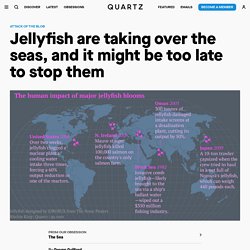

A drifting jellyfish plays host to a small constellation of brittle stars. Meet the world’s only immortal animal. Email If you’re thinking McLeod, you couldn’t be further from the truth.
On QI, they claimed that some species of lobster have an endless lifespan, and were practically immortal (though they can die through injury, of course). Can anyone confirm or refute that? – johnsmith1
What you have to do is think small; not microscopic, just big enough to see with your naked eye.

Turritopsis nutricula is a hydrozoan, and it’s considered by scientists to be the only animal that cheated death. Solitary organisms are (according to current belief) doomed to die, after they completed their life cycle. But Hydrozoa don’t live by normal rules. Still, our Turritopsis nutricula (can I call it Joe?) They’re able to return to polyp stage due to a cell change in the external screen (Exumbrella), which allows them to bypass death.
Jellyfish Photos. Irukandji jellyfish. Irukandji jellyfish (/ˌɪrəˈkændʒi/ IRR-ə-KAN-jee) are small and extremely venomous box jellyfish that inhabit marine waters of Australia and which are able to fire their stingers into their victim, causing symptoms collectively known as Irukandji syndrome.

Their size is roughly a cubic centimetre (1 cm3). There are four known species of Irukandji: Carukia barnesi, Malo kingi, Alatina alata and the recently discovered Malo maximus.[1][2] The symptoms of Irukandji syndrome were first documented by Hugo Flecker in 1952.[3] They were named after the Irukandji people whose country stretches along the coastal strip north of Cairns, Queensland.[4] The first of these jellyfish, Carukia barnesi, was identified in 1964 by Jack Barnes; in order to prove it was the cause of Irukandji syndrome, he captured the tiny jelly and allowed it to sting him while his son and a lifeguard observed the effects.[5][6] Range[edit] Biology[edit] Sting[edit] Irukandji syndrome[edit] References[edit] External links[edit]
Jellyfish are taking over the seas. Last week, Sweden’s Oskarshamn nuclear power plant, which supplies 10% of the country’s energy, had to shut down one of its three reactors after a jellyfish invasion clogged the piping of its cooling system.

The invader, a creature called a moon jellyfish, is 95% water and has no brain. Not what you might call menacing if you only had to deal with one or two. En masse, jellyfish are a bigger problem. “The [moon jellyfish swarm] phenomenon…occurs at regular intervals on Sweden’s three nuclear power plants,” says Torbjörn Larsson, a spokesperson for E.ON, which owns Oskarshamn. Larsson wouldn’t say how much revenue the shutdown cost his company, but noted that jellyfish also caused a shutdown in 2005. Coastal areas around the world have struggled with similar jellyfish blooms, as these population explosions are known. Brotz’s research of 45 major marine ecosystems shows that 62% saw an uptick in blooms (pdf) since 1950. The blight of the jellyfish Tourism has taken a hit, too. How Are Jellyfish Able to Live Without A Brain?
Portuguese Man o' War. "Gosh" you might say, "that's one weird looking jellyfish".

Well, you'd be partly right. Certainly it looks rather odd but it isn't a jellyfish, it isn't even one animal. The Portuguese Man o' War is in fact a whole colony of four different kinds of organism, each adapted to perform a specific function for the benefit of the whole. They are all either a kind of polyp, which are like really small sea anemones, or medusae, similar to tiny jellyfish, but here they are all connected to each other and are unable to survive on their own. Such is the way of the siphonophores, an order of colonial creatures related to... can you believe it? It gets its name from the shape of its sail which resembles that of 16th century warships like man of wars and caravels.
The body beneath the pneumatophore is dominated by the feeding polyps which each have a single tentacle dangling beneath them. They start to reel their load up toward our third organism, the gastrozooids. Did I say groups? Ha!